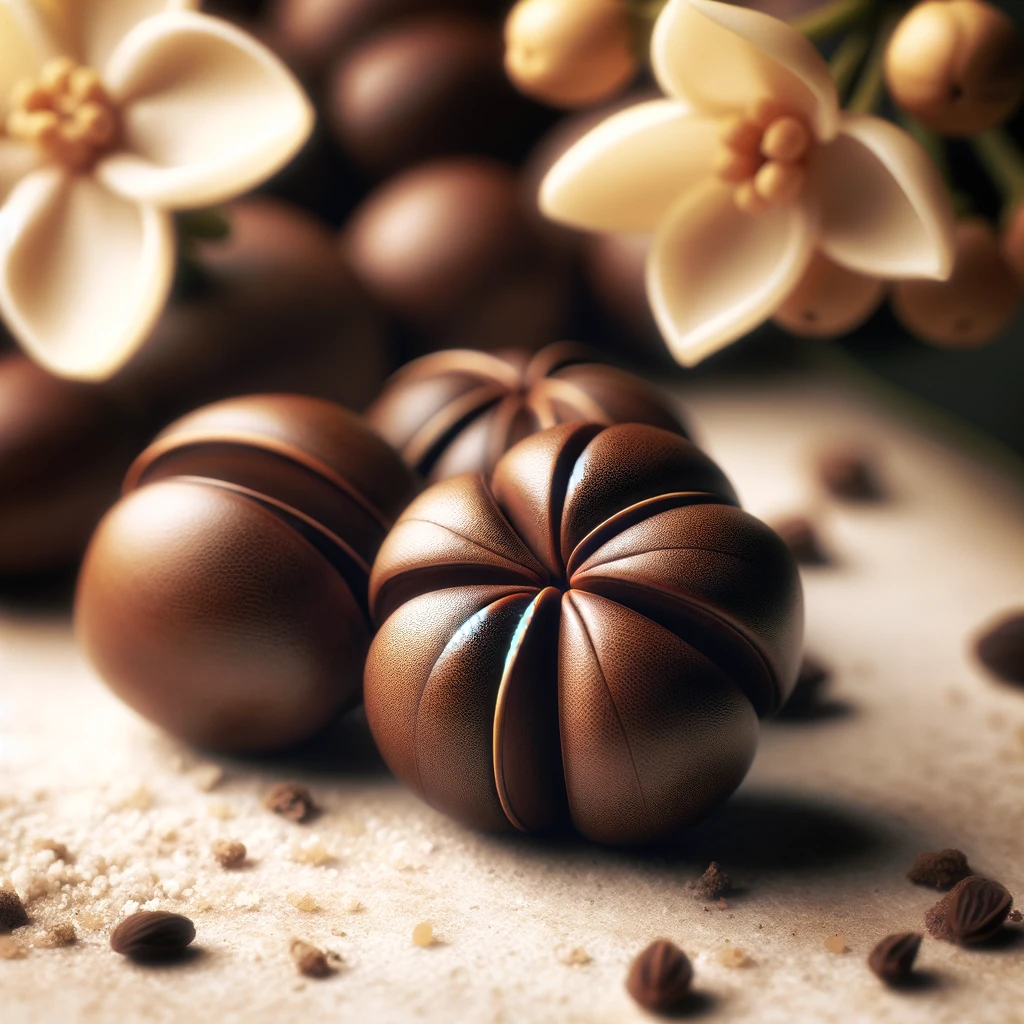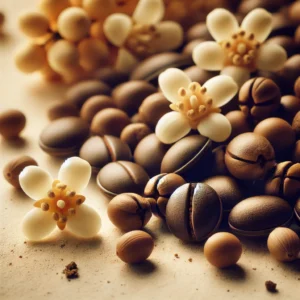
Osmanthus Fragrans Flowering Plant Seeds
Osmanthus Fragrans Flowering Plant Seeds: A Complete Guide to Growing, Caring, and Enjoying Their Beauty
Osmanthus Fragrans Flowering Plant Seeds, commonly known as fragrant tea olive or sweet olive, is a cherished evergreen plant known for its heady aroma, glossy green foliage, and attractive flowers. This versatile plant fits seamlessly into various landscapes—whether used as a hedge, ornamental tree, or potted indoor shrub. It is valued not only for its aesthetic appeal but also for the subtle charm it adds to homes and gardens through its delightful fragrance.
This article offers a comprehensive guide on growing Osmanthus fragrans from seeds, maintaining healthy plants, and maximizing their impact in landscapes and indoor settings.
– A Glimpse Into the Beauty of Osmanthus Fragrans Flowering Plant Seeds
Osmanthus Fragrans Flowering Plant Seeds is more than just a decorative shrub; it is celebrated for:
-
Aromatic Excellence: The flowers release a scent often compared to peach, apricot, or jasmine, which can fill gardens and homes with a relaxing fragrance
-
Evergreen Splendor: With year-round glossy leaves, it ensures visual appeal even in colder months
-
Versatility: Perfect for hedges, ornamental displays, or container gardening, this plant adapts to many growing environments
-
Fragrant Blooms in Multiple Seasons: Depending on the variety, the plant may bloom continuously or seasonally, especially during fall and spring(sheffields)
– Why Choose Osmanthus Fragrans Flowering Plant Seeds?
Growing Osmanthus fragrans from seeds provides an unmatched gardening experience, offering:
-
Satisfaction in Nurturing: Watching seeds transform into lush, aromatic plants creates a deep sense of fulfillment for gardeners.
-
Broader Selection: Seed propagation allows access to rare varieties or cultivars not always available as nursery plants.
-
Greater Resilience: Plants grown from seeds often acclimate better to local environments, improving long-term health(Read more about seeds)
– How to Grow Osmanthus Fragrans Flowering Plant Seeds: A Step-by-Step Guide
Osmanthus Fragrans Flowering Plant Seeds requires time and care, but with proper technique, the results are worth the effort.
-
Seed Preparation: Harvest seeds from ripe, dark purple drupes, which mature 6 months after flowering. Clean the seeds to remove the outer coating.
-
Sowing the Seeds: Plant the seeds 1 to 1.5 inches deep in well-draining seed-starting mix.
-
Maintaining Optimal Conditions: Use heat mats to keep the soil temperature between 70-75°F. Position the pots under grow lights, ensuring 12-14 hours of daily light.
-
Moisture Management: Keep the soil moist but not soggy. Covering pots with plastic wrap helps maintain humidity
-
Patience Required: Germination may take several weeks to three months. Once seedlings appear, allow them to develop true leaves before transplanting
– Alternative Propagation Methods of Osmanthus Fragrans Flowering Plant Seeds
While growing from seeds is fulfilling, stem cuttings and layering are quicker propagation options:
-
Stem Cuttings: Take 3-4 inch cuttings in early summer, dip in rooting hormone, and plant in moist soil. New roots typically form within a few weeks
-
Layering: Bend a low branch to the ground, cover part of it with soil, and wait for roots to develop. Once rooted, cut it from the parent plant and transplant it
– Creating the Ideal Environment for Osmanthus Fragrans Flowering Plant Seeds
Sunlight
-
Grows best in full sun to partial shade. Provide afternoon shade in hot climates to prevent leaf scorch
Soil Requirements
-
Prefers slightly acidic to neutral soils (pH 5.0–7.5). If soil pH is too high, add elemental sulfur to adjust it. Well-drained soil is essential to prevent root rot
Watering
-
Water regularly during the first growing season. Once established, Osmanthus becomes drought-tolerant, only requiring water during dry spells
Fertilization
-
Apply a slow-release fertilizer in spring and summer to support growth and flowering. Avoid fertilizing in winter to protect new shoots from frost damage
Temperature Tolerance
-
Osmanthus fragrans can withstand temperatures as low as 10°F but thrives in zones 8-10. In colder regions, grow it in containers and move it indoors during winter
– Popular Varieties and Cultivars of Osmanthus Fragrans Flowering Plant Seeds
Osmanthus fragrans comes in several beautiful cultivars, each offering unique flower colors and bloom patterns:
-
‘Aurantiacus’: Displays vibrant orange flowers, blooming profusely in fall
-
‘Butter Yellow’: Known for its soft yellow blossoms that brighten gardens.
-
‘Fudingzhu’: Features creamy white flowers and blooms for up to nine months a year
-
Osmanthus x fortunei: A hybrid with spiky leaves and fragrant flowers, ideal for hedges
– Landscaping and Indoor Uses of Osmanthus Fragrans Flowering Plant Seeds
Osmanthus fragrans fits seamlessly into both outdoor and indoor spaces, offering versatility and elegance:
-
Hedges and Privacy Screens: Plant them 5-6 feet apart for dense hedges, providing both beauty and privacy
-
Ornamental Trees: Use them as specimen plants in gardens or mixed borders.
-
Potted Plants: Grow in containers near patios or doorways to enjoy the delightful fragrance throughout the day
-
Indoor Plants: In colder regions, keep smaller varieties indoors during winter to protect them from frost.
– Culinary and Cultural Significance of Osmanthus Fragrans Flowering Plant Seeds
Osmanthus flowers are more than just decorative; they hold cultural and culinary value:
-
Culinary Use: The fragrant flowers are used to flavor teas, jams, and desserts, adding a subtle floral note to dishes
-
Cultural Symbolism: In Chinese culture, Osmanthus symbolizes love, beauty, and good fortune, often featured in festivals and traditional ceremonies.
– Minimal Maintenance for Maximum Beauty for Osmanthus Fragrans Flowering Plant Seeds
Osmanthus fragrans is a low-maintenance plant, requiring only basic care to thrive:
-
Pruning: Minimal pruning in early spring helps maintain shape and encourages new growth. Avoid heavy pruning, as it may delay flowering for up to two years
-
Pest Resistance: The plant is naturally resistant to most pests, with only occasional infestations of scale insects. Regular monitoring ensures early detection and treatment
-
Disease Prevention: Good airflow and well-draining soil reduce the risk of root rot and other diseases
– Benefits of Growing Osmanthus Fragrans Flowering Plant Seeds
This remarkable plant offers multiple benefits:
-
Aromatic Delight: The intoxicating fragrance makes it perfect for gardens, patios, or entryways
-
Year-Round Appeal: Its evergreen foliage keeps landscapes lush even in winter
-
Pollinator-Friendly: The flowers attract bees and other pollinators, enhancing biodiversity in your garden
-
Drought Tolerance: Once established, the plant requires minimal watering, making it ideal for regions with inconsistent rainfall
-
Pest Resistance: Its natural resilience against pests reduces the need for chemical treatments
– A Perfect Plant for Novice and Expert Gardeners Osmanthus Fragrans Flowering Plant Seeds
Osmanthus fragrans offers something for everyone—whether you are a beginner or a seasoned gardener. Novices will appreciate its low-maintenance nature, while experts can experiment with propagation techniques to grow rare cultivars or hybrids
– Conclusion: Osmanthus Fragrans, A Delight for the Senses and Soul
Growing Osmanthus fragrans flowering plant seeds is a journey filled with rewards. From its intoxicating scent to its evergreen elegance, this plant adds charm and beauty to any space. Whether planted as a hedge, cultivated as a potted indoor plant, or used to flavor your tea, Osmanthus fragrans enhances every environment it touches.
Embrace the opportunity to grow this exceptional plant, and let its fragrance and beauty enrich your garden for years to come. With the right care and patience, you can enjoy the visual and aromatic splendor that only Osmanthus fragrans can offer.



